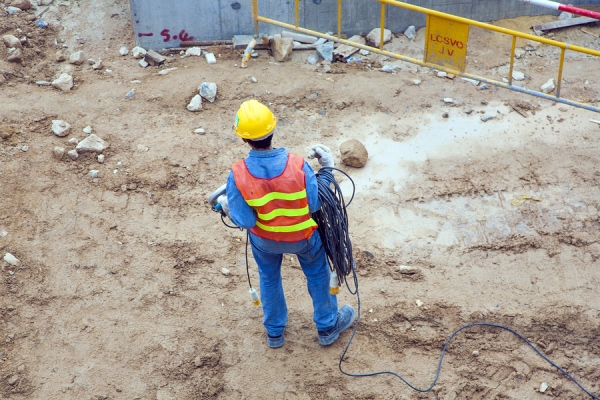Electrical Safety for Construction Sites

It doesn't take a lot of electricity to kill you. The amount of current needed to light an ordinary 60-watt light bulb is five times what can kill a person. Thus, all electrical equipment on construction sites is potentially deadly.
Electrical extension cords are numerous on construction sites and become damaged because of the rough conditions in which they are used.
Inspect to ensure:
- All extension cords are three-wire cords;
- The ground pin is on a male plug;
- There is no unbroken insulation on the cord;
- End appliances (plug and receptacle) are gripped to insulation;
- All wires are continuous and unbroken;
- All cords are protected from damage, likely to occur when passing through a door or window;
- Metal boxes with knockouts are not used on extension cords;
- Plugs are dead-front (molded or screwed in place);
- Romex (non-metallic sheathed cable) is not used as flexible cord;
- Cords are not stapled or hung from nails;
- Bushing is passing through holes in covers or outlet boxes.
Also, check these items:
- Temporary lights are not supported by cords;
- Bulb guards are used on temporary lights;
- Electrical power tools with non-dead man switches have a magnetic restart (when injury to the operator might result if motors were to restart following power failures);
- Provisions are made to prevent machines from automatically restarting upon restoration of power in place;
- Outlets do not have reversed polarity;
- Power tools are double insulated or have a ground pin;
Guard all of exposed electric of more than 50 volts so no one can come in contact (receptacles, light-bulb sockets, bare wires, load center, switches). Guard by:
- Using approved enclosures;
- Locating them in a room, vault or similar enclosure accessible only to qualified persons;
- Arranging suitable permanent, substantial partitions or screens so only qualified persons have access to the space within reach of live parts;
- Locating them on a suitable balcony or platform that is elevated and arranged to exclude unqualified persons;
- Elevating them 8 feet or more above the working surface.
It's important to take the time prior to beginning work at construction sites each day. The fluid nature of the activities, along with the changing environment and high potential for damage can let these items become a hazard quickly.